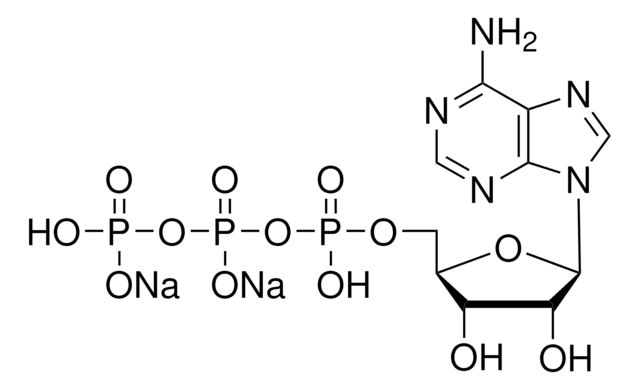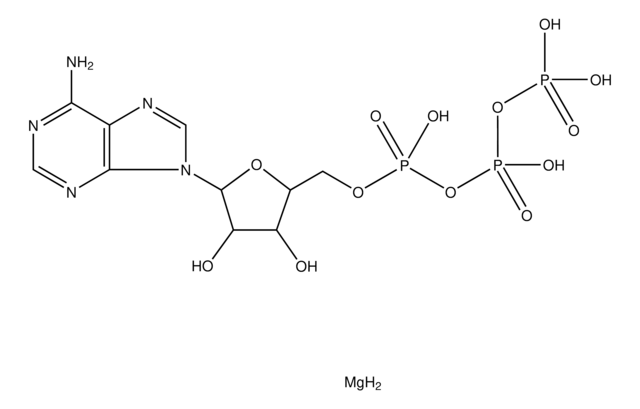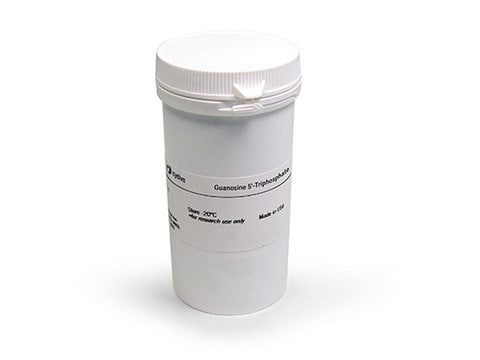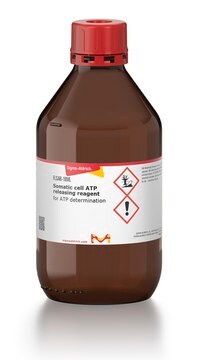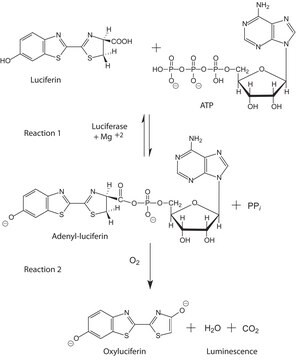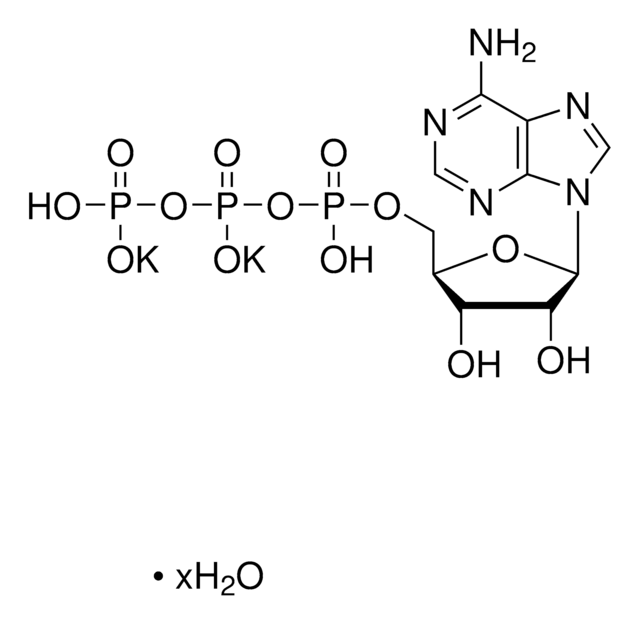20-306
10mM ATP
Synonym(s):
Adenosine triphosphate solution
Sign Into View Organizational & Contract Pricing
All Photos(1)
About This Item
UNSPSC Code:
41116012
eCl@ss:
32160405
NACRES:
NA.41
Recommended Products
General description
Adenosine triphosphate (ATP) comprises an adenine base linked to sugar ribose and three phosphate groups.
Application
10mM ATP has been used in cyclin-dependent kinase 5 (CDK5) and calpain activity assay to determine CDK5 activity in brain tissues.
Biochem/physiol Actions
Adenosine triphosphate (ATP) is the most crucial energy currency of cells, which is implicated in many cellular processes. It has high phosphate transfer potential, which is useful in muscle contraction, membrane transport, synthesis, and degradation of biological molecules. ATP functions as an intracellular/extracellular signaling molecule in cellular processes like cell motility, insulin secretion, neurotransmission, and organ development.
Legal Information
UPSTATE is a registered trademark of Merck KGaA, Darmstadt, Germany
Storage Class Code
12 - Non Combustible Liquids
WGK
WGK 1
Flash Point(F)
Not applicable
Flash Point(C)
Not applicable
Certificates of Analysis (COA)
Search for Certificates of Analysis (COA) by entering the products Lot/Batch Number. Lot and Batch Numbers can be found on a product’s label following the words ‘Lot’ or ‘Batch’.
Already Own This Product?
Find documentation for the products that you have recently purchased in the Document Library.
Customers Also Viewed
Hiromi Imamura et al.
Proceedings of the National Academy of Sciences of the United States of America, 106(37), 15651-15656 (2009-09-02)
Adenosine 5'-triphosphate (ATP) is the major energy currency of cells and is involved in many cellular processes. However, there is no method for real-time monitoring of ATP levels inside individual living cells. To visualize ATP levels, we generated a series
Qing-Zhang Tuo et al.
Cell death & disease, 9(9), 870-870 (2018-08-31)
CDK5 activation promotes ischemic neuronal death in stroke, with the recognized activation mechanism being calpain-dependent p35 cleavage to p25. Here we reported that CDK5-Tyr15 phosphorylation by zinc induced CDK5 activation in brain ischemic injury. CDK5 activation and CDK5-Tyr15 phosphorylation were
Our team of scientists has experience in all areas of research including Life Science, Material Science, Chemical Synthesis, Chromatography, Analytical and many others.
Contact Technical Service

